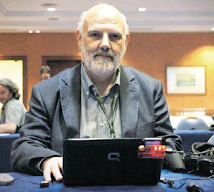
This is not good news for India's central bank which has has raised its benchmark interest rate nine times since October 2004 and ordered commercial lenders to set aside more money five times since December 2006 to prevent excess cash in the economy from stoking inflation. In fact it is highly likely that inflation in India is now running at over 6% since the Commerce Ministry, which revises the data with a time lag of two months also announced the revised inflation rate for the week ended Jan. 12 was 4.36 percent rather than the earlier 3.83 percent reading, and such upward revisions now go on week after week.
As one part of the government response India this week banned exports of edible oils on concern a smaller winter oilseed crop may worsen a shortage and fan prices. Finance Minister Palaniappan Chidambaram said March 17 his battle against inflation is becoming more intense due to rising commodity and food costs.
India's winter-sown oilseeds harvest may decline to 9.6 million tons from 10.3 million tons last year, the government said on Feb. 28. India relies on imports to meet half its edible oil needs. It buys palm oil from Indonesia and Malaysia, and soybean oil from Argentina and Brazil.
The government will take more measures to subsidize food items and will urge the Reserve Bank of India to take monetary steps to contain inflation, Chidambaram also said this week.












